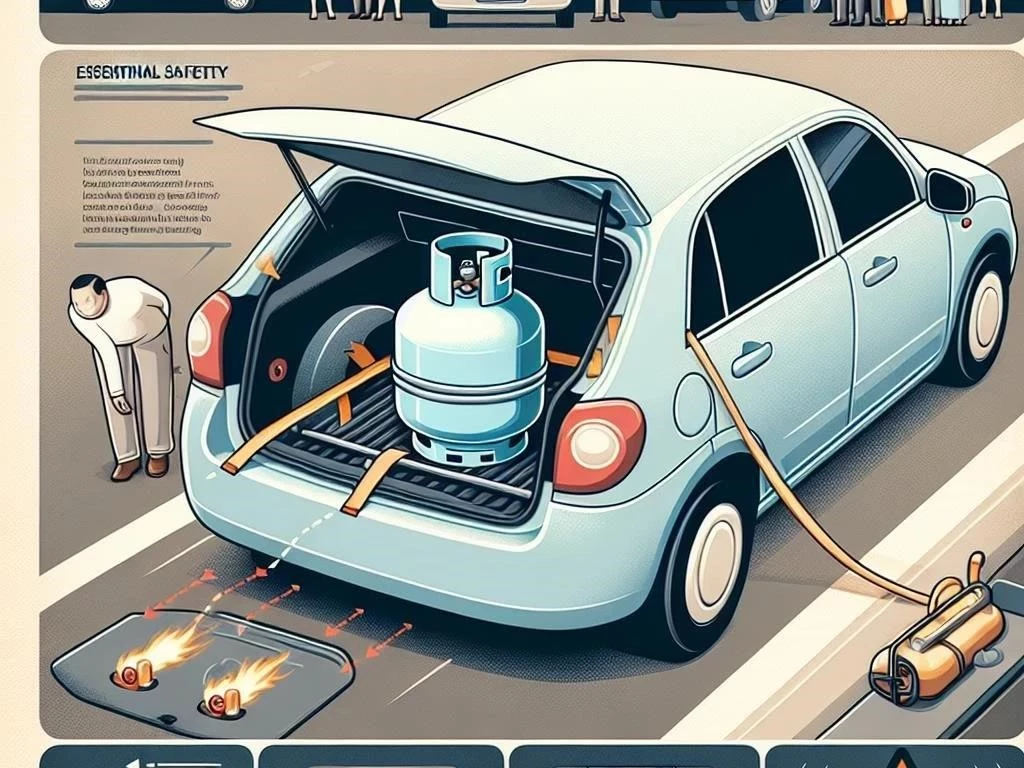Transporting propane safely requires adherence to specific guidelines. Understand propane regulations‚ secure fittings‚ and ensure proper ventilation. Follow transportation tips for handling hazardous materials while considering vehicle storage and weight distribution.
Understanding Propane Safety
When transporting propane‚ it is crucial to understand the inherent risks associated with flammable materials. Propane is a highly flammable gas‚ necessitating strict adherence to propane safety regulations. Always handle propane cylinders with care‚ ensuring secure fittings to prevent leaks. Familiarize yourself with transportation tips‚ including the importance of weight distribution in your vehicle’s cargo space. Proper gas tank handling is essential for safe transport‚ as improperly secured tanks can lead to accidents. Ensure that your vehicle has adequate ventilation‚ as propane leaks can create hazardous environments. Be aware of local propane regulations‚ which may dictate specific transport guidelines. In case of emergencies‚ having a clear understanding of emergency procedures is vital. Always carry a fire extinguisher and know how to use it effectively. If transporting multiple cylinders‚ consider the recommended limits and secure transport methods to prevent shifting during transit; Prioritize safety precautions to protect yourself and others when dealing with hazardous materials like propane. Adhering to these guidelines ensures a safe and responsible transportation experience.
Preparing for Transportation
Preparing for the safe transportation of propane involves several key steps. Firstly‚ inspect the propane cylinder for any signs of damage or rust‚ ensuring that it’s fit for transport. Check all secure fittings to guarantee there are no leaks; any signs of wear should be addressed before moving forward. Next‚ ensure your vehicle is suitable for carrying hazardous materials‚ specifically regarding ventilation in the cargo space. Proper gas tank handling is crucial; always transport the cylinder upright to prevent leaks and ensure stability. When loading the propane tank‚ consider weight distribution to maintain vehicle balance and control during transit. Additionally‚ familiarize yourself with local propane regulations to ensure compliance with transportation laws. Always secure the cylinder with appropriate restraints to prevent movement while driving. Carry emergency procedures information‚ including contact details for local emergency services. Finally‚ plan your route to avoid heavily populated areas and ensure you have access to safe storage locations. Taking these precautions will greatly enhance safety during propane transportation.
Vehicle Storage Considerations
When transporting propane tanks‚ vehicle storage considerations play a crucial role in ensuring safety. First‚ always store propane cylinders in an upright position. This prevents leaks and allows for proper pressure management within the cylinder. Ensure that the cargo space is clean‚ dry‚ and free from any debris or flammable materials that could pose a risk during transport. Additionally‚ check that the vehicle’s ventilation is adequate to prevent gas accumulation. Avoid storing propane cylinders in closed compartments‚ as this can increase the risk of hazardous gas buildup. It’s essential to consider weight distribution; place the cylinder in a location that maintains vehicle balance and stability while driving. Secure the propane tank using appropriate restraints to prevent movement‚ particularly during sudden stops or turns. Familiarize yourself with local propane regulations regarding vehicle storage; adherence to these regulations is paramount. Lastly‚ avoid parking near open flames or heat sources‚ as propane is highly flammable. Following these storage considerations will significantly enhance safety while transporting propane tanks.
Secure Transport Guidelines
When transporting propane tanks‚ adhering to secure transport guidelines is essential for safety. Begin by selecting a suitable vehicle equipped to handle hazardous materials. Ensure the propane cylinder is upright and secured to prevent shifting during transit. Use appropriate restraints‚ such as straps or bungee cords‚ to keep the cylinder stable. It’s crucial to avoid overloading the cargo space; follow weight distribution principles to maintain vehicle control. Before transport‚ inspect the propane cylinder for leaks and secure fittings; any damage must be addressed immediately. Always keep the cylinder away from sources of heat or open flames during transport‚ as propane is highly flammable. Use designated storage areas in your vehicle‚ preferably in well-ventilated spaces‚ to minimize vapor accumulation. Familiarize yourself with transport guidelines and local propane regulations to ensure compliance. If transporting multiple cylinders‚ ensure they are spaced adequately apart to avoid contact. Keeping emergency procedures accessible is vital in case of accidents. Following these secure transport guidelines will significantly enhance safety when transporting propane tanks.
Emergency Procedures and Safety Precautions
In the event of an emergency while transporting propane‚ having a clear understanding of procedures and safety precautions is critical. First‚ always keep a fire extinguisher within reach in your vehicle‚ ensuring it is rated for flammable materials. If you detect a gas leak‚ immediately evacuate the area and avoid using electronic devices or open flames. Ventilate the area by opening windows or doors‚ if safe to do so. If a propane cylinder is damaged or leaking‚ isolate the tank and contact emergency services without delay. Familiarize yourself with local emergency contacts and protocols for hazardous materials. Always wear protective gear‚ such as gloves and goggles‚ when handling propane cylinders. Maintain a safe distance from any potential sources of ignition. Practicing safety precautions‚ such as avoiding overfilling and ensuring secure fittings‚ greatly reduces risks. Regularly review emergency procedures with all individuals involved in transporting propane. Being prepared can ensure a prompt and effective response to any incidents during transportation‚ significantly enhancing safety.

